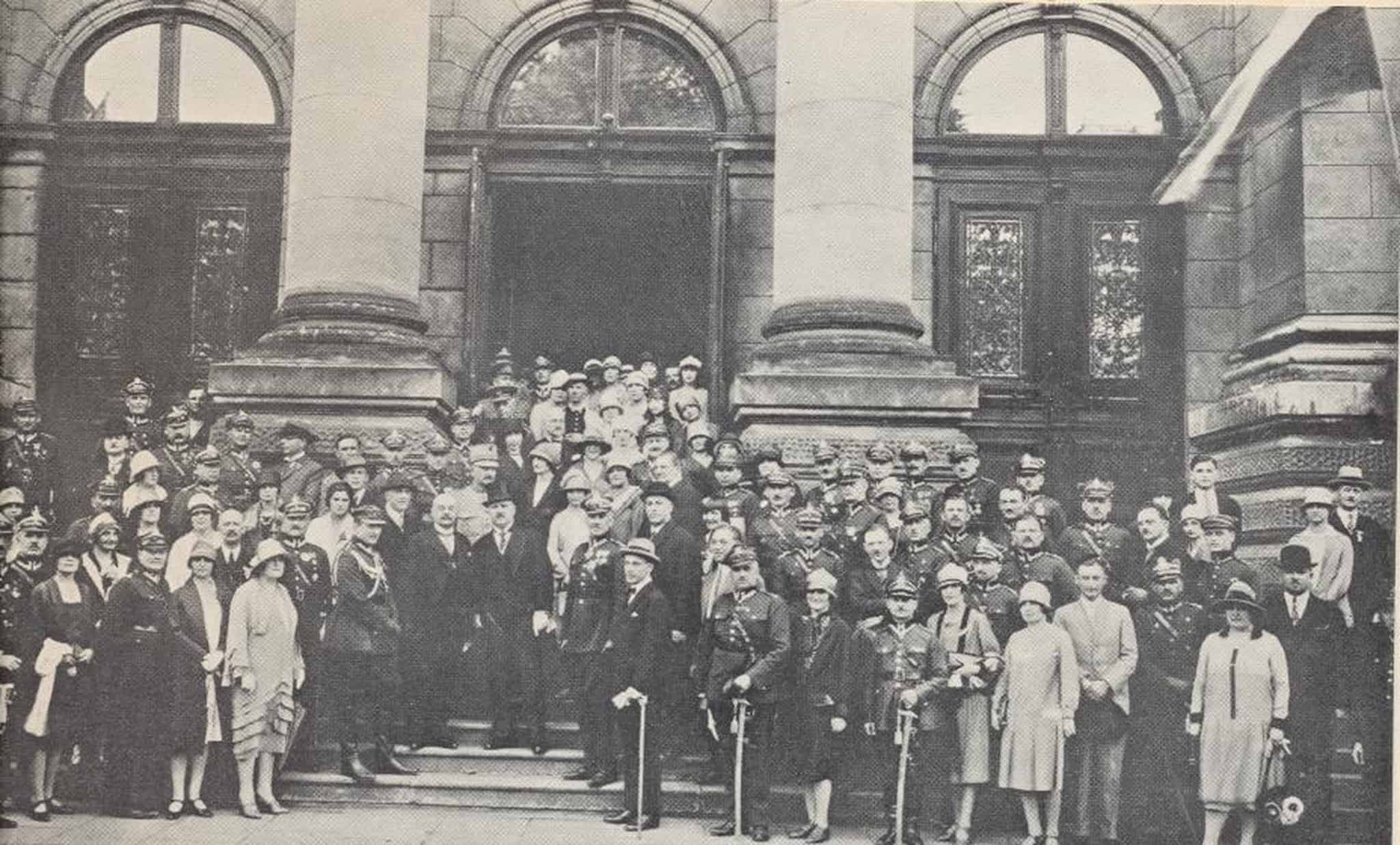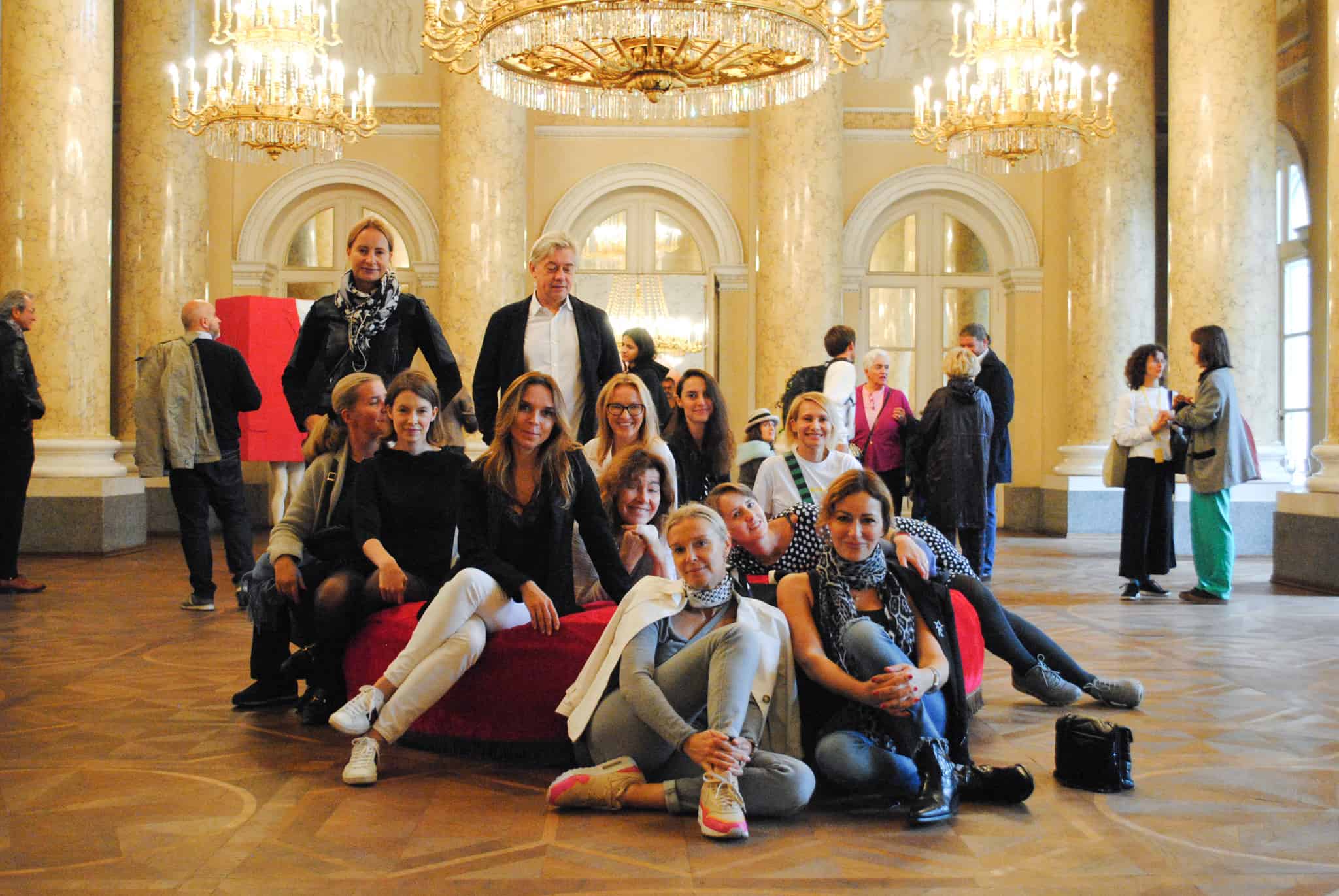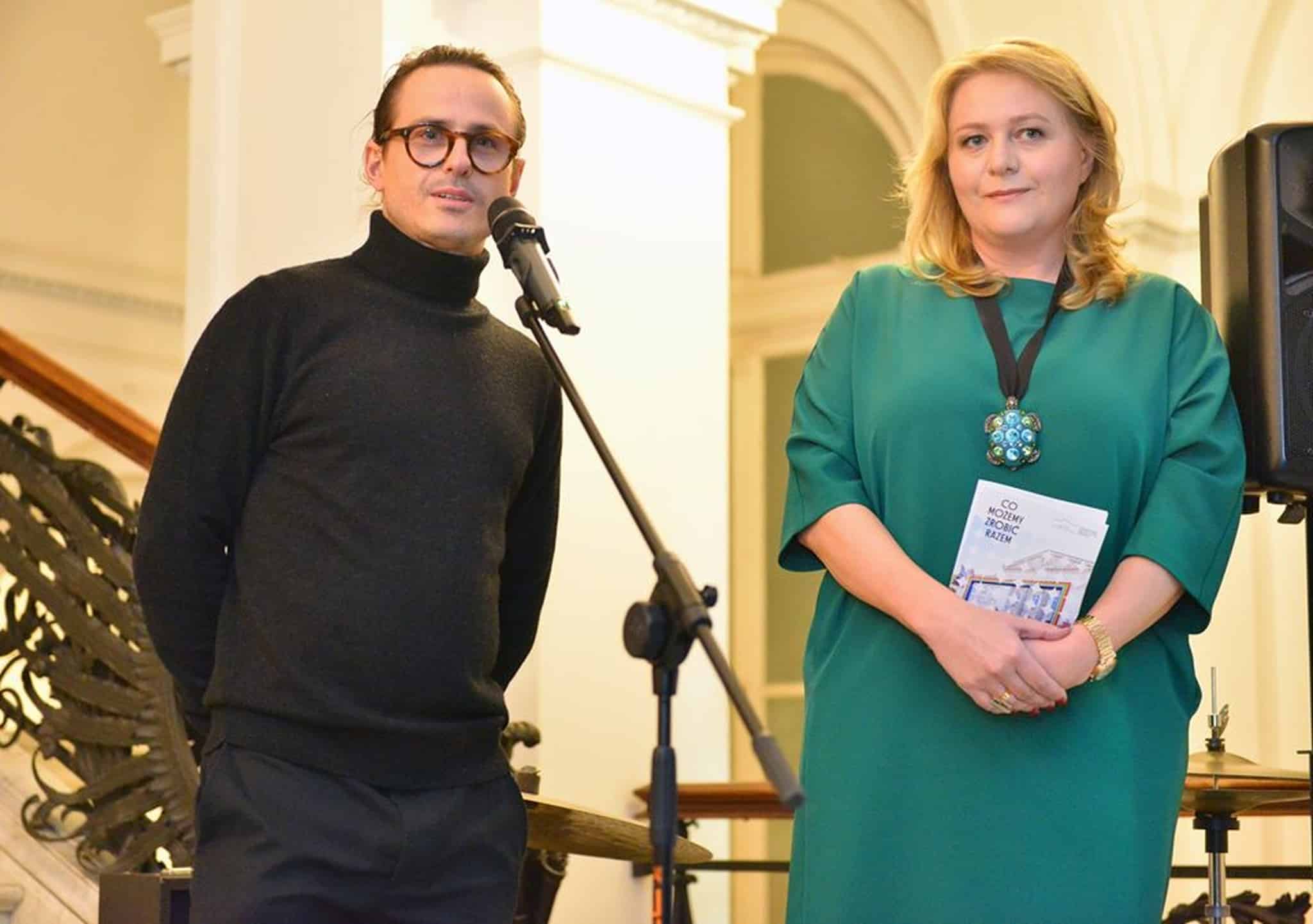Art enthusiasts’ associations, gallery friends’ societies or people who support the operations of a given cultural institution function all over the world. They serve as popular ways of bringing together institutions and their audiences and fostering relationships between them. One such society is celebrating its 160th anniversary this year. It is a society running its activities at the Zachęta National Gallery of Art in Warsaw. Its story is a story of joint efforts taken up by artists and art enthusiasts with the goal of promoting art, making it a central meeting point for people sharing similar passions and interests. Additionally, it provides encouragement for the joint development of a place which supports art circles. I had the opportunity to talk about the work the Society does and the projects it is currently working on with the President of the Board, Natalia Hojny and Zofia Koźniewska, the Society’s Project Coordinator.

Founders of The Society for the Encouragement of Fine Arts, Warsaw
Dobromiła Błaszczyk: Society for the Encouragement of Fine Arts by the Zachęta Gallery (SEFA) has been functioning for 160 years now. Where did the idea/need for establishing the Society come from 160 years ago?
Natalia Hojny: The idea to establish the Society was born in the atelier owned by Wojciech Gerson, a painter. It was a particularly difficult time for Polish artists — there was no art education during the Partition period, there was neither state art patronage nor support on the part of aristocracy who had either lost their property or chosen emigration after the November Uprising. For that reason, it was important to create a permanent exhibition since the very beginning, providing a place for artists to showcase their works and contact potential collectors. “Dissemination” of Polish art was considered equally vital.
Zofia Koźniewska: The Society surely played a substantial role in developing civic attitudes and a feeling of social responsibility — the members believed that they were creating an institution jointly, which played a particularly vital role in raising funds for the construction of the gallery building. Zachęta was also the first institution in Warsaw to introduce a modern way of participating in culture during one’s free time. Visiting the Zachęta Gallery became a customary way of spending a Sunday afternoon among Warsaw families. To a large extent, the Society’s function has not changed to this day.
DB: We sometimes hear myths that you have to be a proverbial “millionaire” to become a Society member in order to pay the exorbitant subscription fees, or that you have to have a special recommendation to enter this “secret circle.” But this is far from the truth. How can you become a member of the Society?
NH: Absolutely not! Passion for art and the willingness to devote your free time to art is what brings all of our members together. If you meet these two conditions, you will surely feel great in the Society. We are trying to develop our membership programmes, so that in addition to the feeling of exclusiveness and extraordinariness, our members have a chance to experience some entertainment — for example, during the last Warsaw Gallery Weekend, we cycled from one gallery to another, which was an idea put forward by Zosia Koźniewska, SEFA coordinator.
ZK: And we organised a picnic on our way to Henry Moore’s exhibition at the Centre of Polish Sculpture in Orońsko. There are various membership levels and the most basic one — Friend of Zachęta, starts with a fee of 10 zloty per month, so no more than a cup of coffee. Our members can also bring their own ideas and contacts to the Society — we are developing our programmes together. To sign up, all you need to do is visit our website tzsp.art.pl, choose one of our membership programmes, and that’s it!

The Society for the Encouragement of Fine Arts at the “Marina Abramovic. The Cleaner” exhibition, CSW Znaki, Toruń, photo by Michalina Musielik
DB: What role does the Society play in relation to the institution it is a part of?
NH: The Society largely plays the same role as it did during the beginning of its operations. It is responsible for raising funds from private donors, which are then transferred to Zachęta — for example, for the development of the collection and the 160/160 scholarship programme. It organises joint educational programmes with Zachęta, aimed at promoting contemporary art. As many as 200 teachers have been trained as a part of courses for teachers from outside Warsaw entitled “Art Alphabet – How to Read Contemporary Art?”
DB: The Society supports the purchase of works for the collection at Zachęta. What’s the procedure?
ZK: At Zachęta, works are purchased by the Procurement Committee composed of the gallery staff. Each year, the committee presents a work that they wish to buy thanks to a donation from the Society. This is how Zachęta got works by such artists as Karol Radziszewski, Liliana Piskorska and Radek Szlaga.
The Society for the Encouragement of Fine Arts visiting the private Collection Sanziany at the Rasumofsky Palace during Vienna Contemporary Art Fair, 2019, photo by Michalina Musielik
Sneak preview of the “Radek Szlaga. Places I Had No Intention of Seeing” exhibition, photo by Marek Krzyżanek
DB: You are currently launching a very important project related to the digitisation of the Zachęta collection. Does that mean that it has not been done yet? The Society takes a new role here — as the collection guardian. Does this also stem from the history of the Society?
ZK: Zachęta has been making efforts to increase the accessibility of the collection since 2011. This marked the beginning of the otwartazacheta.pl website, where Zachęta, as the first public institution of this type in Poland, provided access to works under a Creative Commons licence. Simultaneously, the gallery started running an educational programme called Accessible Art, which included meetings with persons with visual or hearing impairments. The purpose of the activities was to provide access to the collection and resources of the gallery to everyone, notwithstanding any economic, geographic or disability barriers.
NH: As early as 2013, the Society wanted to support Zachęta in these measures by creating a widely accessible educational tool based on the digitised resources. We invited Centrum Cyfrowe (Digital Centre) to cooperate, and based on the Society’s order, it conducted a nation—wide study of the available educational tools related to contemporary art. It turned out that there was still a lot to do. That is why we were trying to obtain a grant from the Digital Poland programme since 2016. We succeeded last year after three attempts.
ZK: Additionally, a lot of items from the Zachęta collection (for example, sculptures by Katarzyna Kozyra and Alina Szapocznikow) were digitised using 3D technology. The purpose of the digitisation was to facilitate contacts with contemporary art to those recipients whose access to art was hindered.
DB: On the one hand, we have members of the Society fascinated with art and creators who have been given an opportunity to have profound meetings with them. On the other hand, we have those “showcased” and “explained” artists. What role do the relationships with artists and direct support for artistic circles play? Does this only apply to local, Warsaw-based artists, or does it have a nation-wide reach?
NH: The Society has always been a meeting platform for artists and collectors, and this is also a role which it currently plays. We are present at the Warsaw Gallery Weekend, we visit private galleries and ateliers, as well as private art collections. This not only refers to Warsaw-based artists, because we visited numerous cities in Poland and abroad in our artistic journey, meeting with local artists.
ZK: We always place emphasis on presenting local art circles to the Society members, not only large institutions like museums or galleries. I think that communication between collectors, art enthusiasts and artists is essential, and it is not always possible in major institutions. Participation in events organised by the Society provides such an opportunity.

Curator guide at the Polish Pavilion during the Venice Biennale, photo by Zofia Sikorska
DB: Starting in 2020, you have begun distributing 800,000 zloty to artists impacted by the effects of the pandemic for the support for their work. The project is called 160/160. What are the principles for awarding scholarships, who awards them, and how can artists use the funds?
NH: The 160/160 project was the Society’s and Zachęta’s response to the difficult economic situation related to the COVID-19 pandemic. Numerous exhibitions and projects were rescheduled or cancelled and art fairs did not take place. Our scholarship programme is addressed to those artists whose works are in the Zachęta collection. As part of the scholarship, amounting to 5,000 zloty, artists are requested to provide an author’s commentary on their specific work. It can be a text, an interview, or a micro-action which will contribute to our resources and build upon the story behind the collection. Each month, a committee composed of Zachęta staff members and a Society member is convened, and the composition of the committee changes every three months. Our objective is to award 160 scholarships for the 160th anniversary of the Society for the Encouragement of Fine Arts!
DB: The slogan of the celebrations is “it all began with a meeting.” What possibilities for a meeting do you provide to your Society members? Why is it worth being part of this community?
ZK: This year has been a huge challenge to us, because until now participation in the Society was all about meetings, conversations and joint experiences of art in person. We had a rich programme of meetings and trips, including trips abroad. We accompany Zachęta in its international projects, such as exhibitions at the Polish Pavilion during the Venice Biennale. Society members take part in a specially arranged trip to the Biennale, where they can meet artists and visit the exhibitions with curators. We also went to art fairs (like Frieze or Art Basel), to Biennale Manifesta do Palermo and to view private collections in Berlin or Vienna. This was not possible this year because of the pandemic. But it showed the great need to be together, especially during the first lockdown, so we switched to online platforms. This form of communication allowed us to get to know numerous members closer, despite the distance. After it became possible, we were visiting exhibitions together again, among others, fantastic exhibitions by Monika Sosnowska and Joanna Piotrowska.
NH: In fact, on Joanna’s initiative we organised fundraising for the Feminoteka Foundation, and we managed to raise over 50,000 zloty in only 24 hours.
ZK: We are currently continuing our series of online meetings with artists who received scholarships as part of the 160/160 project while hosting meetings to celebrate the Society’s anniversary, with the first one held in December. Starting from 1 February, you are invited to attend events at Zachęta. But most of all it is worth being with us for the same reason it was worth giving a donation to the construction of the gallery building 160 years ago — to be part of the community and to feel that we will leave behind something for future generations of art enthusiasts.
DB: Thank you for the interview. The readers are welcome to join the Society bringing together the Friends of Zachęta.

Marek Sobczyk, Simple Rainbow











![Jan PAMUŁA (1944-2022), Colour Collections [chromatic] 1976 / III, 1976, acrylic, canvas; 91 x 111 cm. Couretsy of the Wallspace Gallery.](https://static.contemporarylynx.co.uk/wp-content/uploads/2024/10/02-PAMULA-442-WALLSPACE-GALLERY-Edytuj-1024x842.jpg)

